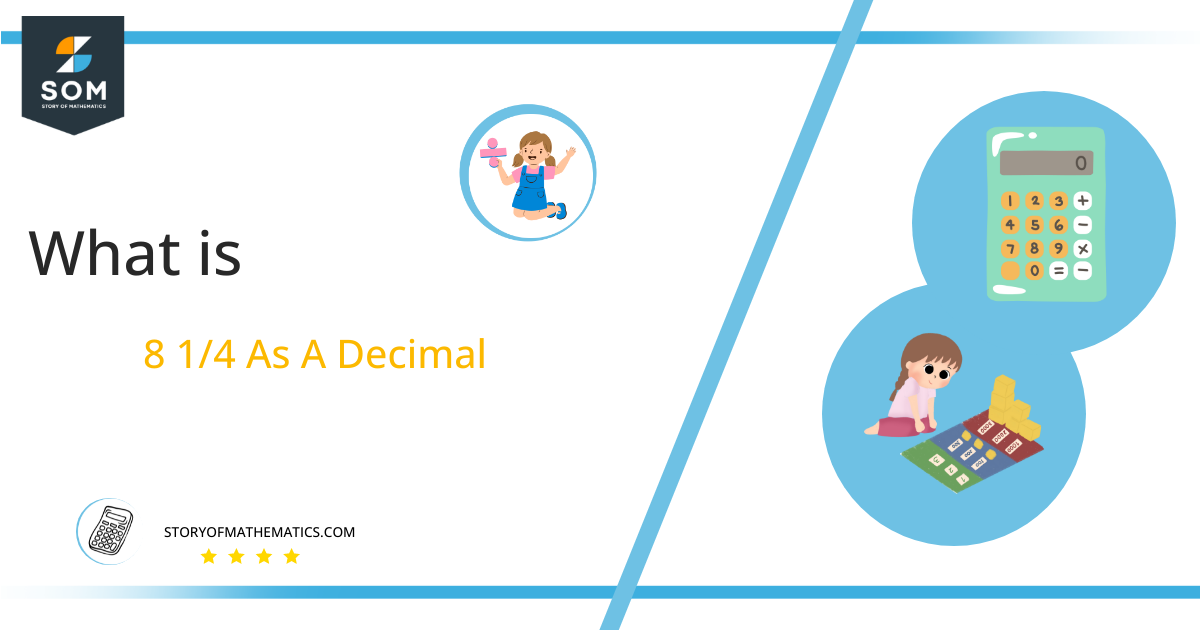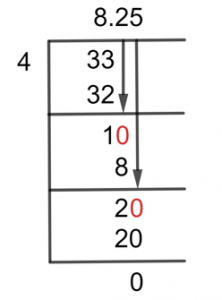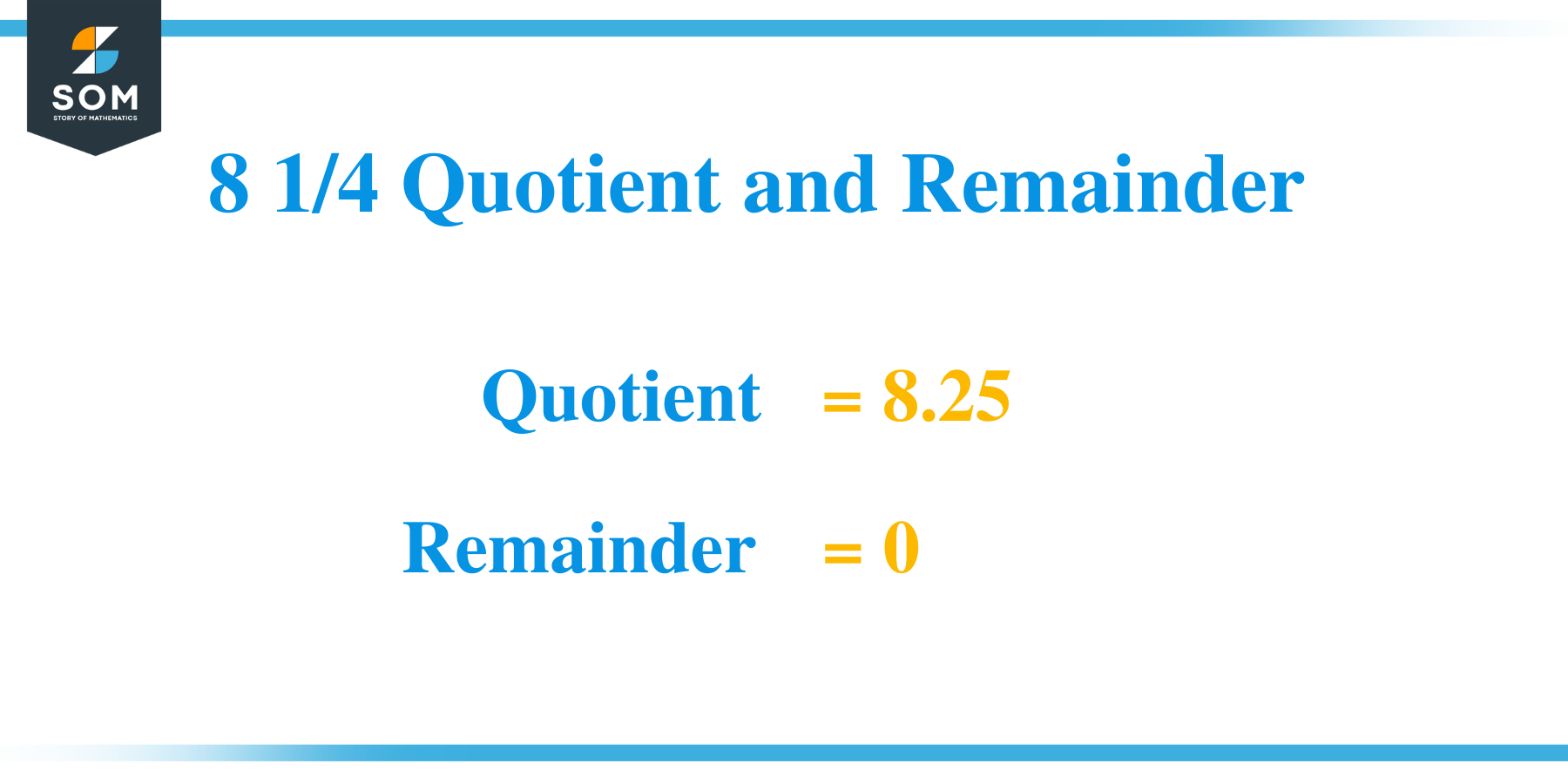What Is 8 1/4 as a Decimal + Solution With Free Steps

The fraction 8 1/4 as a decimal is equal to 8.25.
Proper fraction, improper fraction, and mixed fraction are the three types of Fractions. We convert fractions into Decimal values, and this conversion includes division. The division method is one of the most difficult fractional operators to master. We can make it simple by using an approach called Long Division.
Fractions can be represented in the form of p/q, and we convert fractions to decimal values to make them easy to understand. Also, decimal values are more useful in mathematical problems. So the fractions can be converted into decimal values using the long division method.
Solution
The mixed fraction must be transformed into p/q form. The fraction’s q is referred to as the Denominator, and the p is known as the Numerator. To convert mixed fractions into p/q format, we will first multiply the denominator with the whole number and then add the numerator to it. By doing so, we now have a fraction of 33/4.
Dividend and Divisor are important terms in the long division approach. The p is the dividend, and the q is the divisor in the fraction representation of the expression p/q. The dividend and divider are as follows:
Dividend = 33
Divisor = 4
When we convert fractions into decimal values, the resulting number is referred to as the Quotient. It is the solution of the fraction in decimal form.
Quotient = Dividend $ \div $ Divisor = 33 $ \div $ 4
The long division method for the given fraction is as under:
Figure 1
33/4 Long Division Method
The fraction we had:
33 $ \div $ 4
When we have a case of the dividend being more significant than the divisor, we can directly divide two numbers. Here we have a dividend of 33 more significant than the divisor, so we will directly divide both numbers.
The remainder is another critical term that needs to be understood for the long division method. It is the number left after the division of two numbers that are not wholly divisible by each other.
33 $ \div $ 4 $ \approx $ 8
Where:
4 x 8 = 32
For the remainder, we have 33 – 32 = 1. The remainder is less than the divisor, so to proceed further, we need to add zero to the right side of the remainder. For that, we will add a decimal point to the quotient. By doing so, now we have a new remainder of 10.
10 $ \div $ 4 $ \approx $ 2
Where:
4 x 2 = 8
We now have a remainder of 10 – 8 = 2. Again, we will add zero to the right side of the remainder, and we will get 20.
20 $ \div $ 4 = 5
Where:
4 x 5 = 20
So we have a resulting Quotient of 8.25 with a Remainder of 0.

Images/mathematical drawings are created with GeoGebra.
